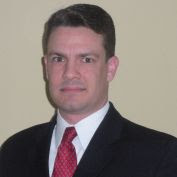You know that saving and putting money away is important and you do it when you can. You wonder if you are doing the right thing.
You are bombarded all day everyday by the 24 hour news and the investerati that you need to do this and you better not do that. It’s confusing to say the least.
S
 tudies show that employees waste a lot of time. Some studies put the figure at as much as one hour a day. In addition, those same studies show that as much as half of that time is spent on personal finance.
tudies show that employees waste a lot of time. Some studies put the figure at as much as one hour a day. In addition, those same studies show that as much as half of that time is spent on personal finance. Opportunity cost or economic opportunity loss is the value of the next best alternative foregone as a result of making a decision.
When employees choose to engage in activities other than work while at work, they have made such a choice. Besides the time and productivity decrease, it is virtually impossible to know what they may have achieved during that time.
When the activity chosen at work is personal finance however, we can say beyond any reasonable doubt that they have chosen an activity which is not only detrimental to their employer but detrimental to themselves as well.
While it is great to see people taking an interest, it is entirely unhealthy for a business to have its employees re-balancing their 401k, day trading, calling their stockbroker, stock picking and monitoring the stock market.
And what’s worse is that it’s all likely to no avail since every study on the subject shows that passive investing beats active investing over any reasonable time-frame, especially given the lowering of index fund fees.
 Engaging in an activity at work that isn’t work is a waste of valuable productive time but to engage in an activity that has been proven to be counterproductive is hard to imagine but it happens every day in every office.
Engaging in an activity at work that isn’t work is a waste of valuable productive time but to engage in an activity that has been proven to be counterproductive is hard to imagine but it happens every day in every office. The solution is simple. Consider the fact that over 90% of professional money managers cannot beat the simple S&P 500 index.
There is an abundance of evidence that suggests that simply buying an index fund (either ETF or mutual fund) will not only save you a fortune in fees over a lifetime but increase your investment results. Furthermore, you will personally be better off as well having more time and less stress.
About our Guest Author:
 Scott Barclay is the author of ‘How the Investment Business Really Works’ (www.htibrw.com) and is a sought after speaker and workshop facilitator.
Scott Barclay is the author of ‘How the Investment Business Really Works’ (www.htibrw.com) and is a sought after speaker and workshop facilitator.Mr. Barclay worked for some of wall street’s biggest firms and knows how the investment business really works. He graduated from the University of Alberta in Psychology and Physics and has completed graduate work in both finance and organizational behavior from McMaster University and the University of Texas at Dallas.






.jpg)






